By Lancy Cheng
These tales from the South have been shared by naturalist Lancy Cheng who leads events with Nature NL including our Gull workshop. Or you may have seen him when birding around town, especially at Quidi Vidi Lake where he would be identifying gulls during all seasons, especially winter! We hope you will enjoy his reflections on these recent adventures.
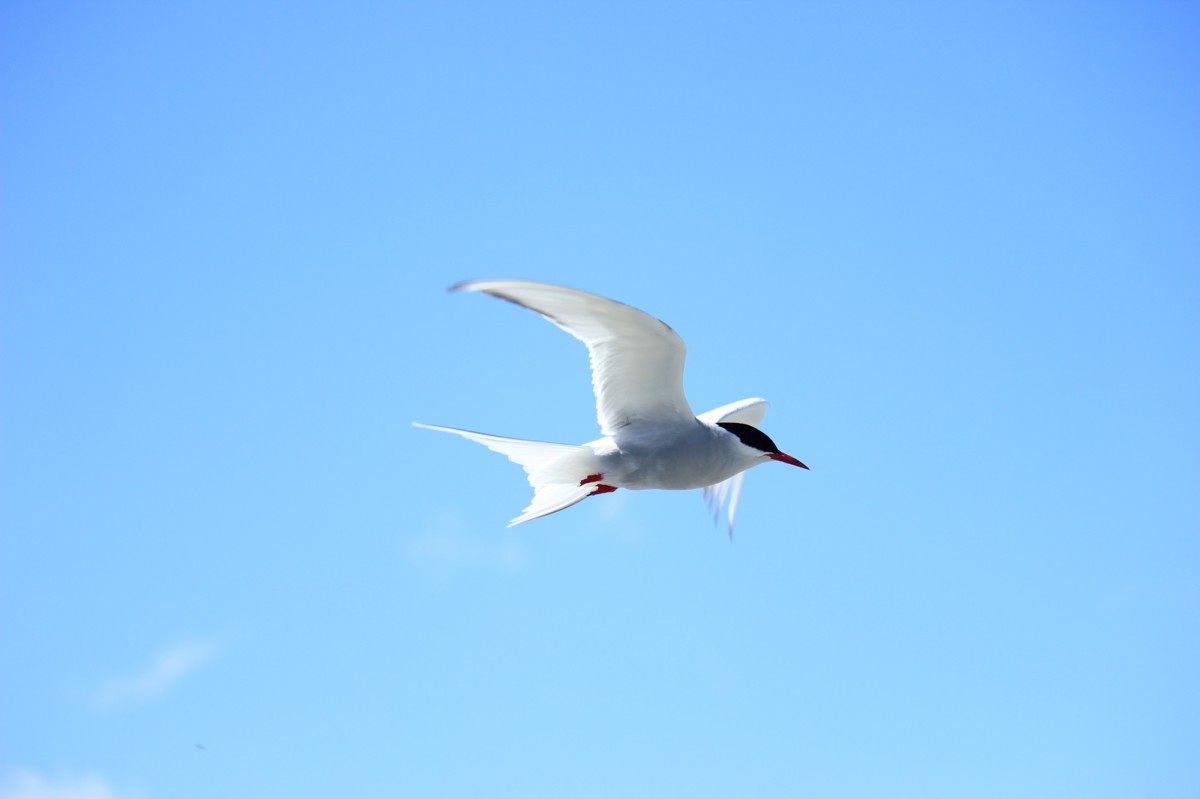
This was the dream I had before landing in Punta Arenas, Chile. I was not a lone bird but with a team of Hurtigruten expedition staff. We continued our journey onboard MS Roald Amundsen on December 14th, 2019, the same day that Roald Amundsen reached south pole for the first time in human history, 108 years ago. Coincidence? Fate?

Birds of Antarctica
I am a birdman and I am always looking for birds. Around this large frozen white desert, there are two major groups of birds: those that glide and those that slide. The gliders are Procellariiformes, or tubenoses, and include albatrosses, petrels, shearwaters and storm petrels. We have seen 5 albatross species and the most spectacular ones are, IMHO, the largest ones, Wandering and Royal. They are so elegant and effortless riding winds that you feel the sound of their wings cutting water from a mile away. They make the world’s top skaters and surfers look like amateurs, and make birders like me scratch our heads.
Identification of Wandering and Royal albatrosses is one of the hardest challenges in birding. In my book, there are 17 pages talking about the difference between these two species (but only 15 pages to cover up to 20 penguin species…)! In fact, I couldn’t even differentiate between two “species” with certainty. The taxonomy is changing constantly—there may be five Wandering and two Royal species right now. Plus, Wandering has seven age progression stages, Southern Royal has five, and Northern Royal has two… the difficult yet fascinating identification details have made great albatrosses my new addiction, (besides four year gulls, of course!).
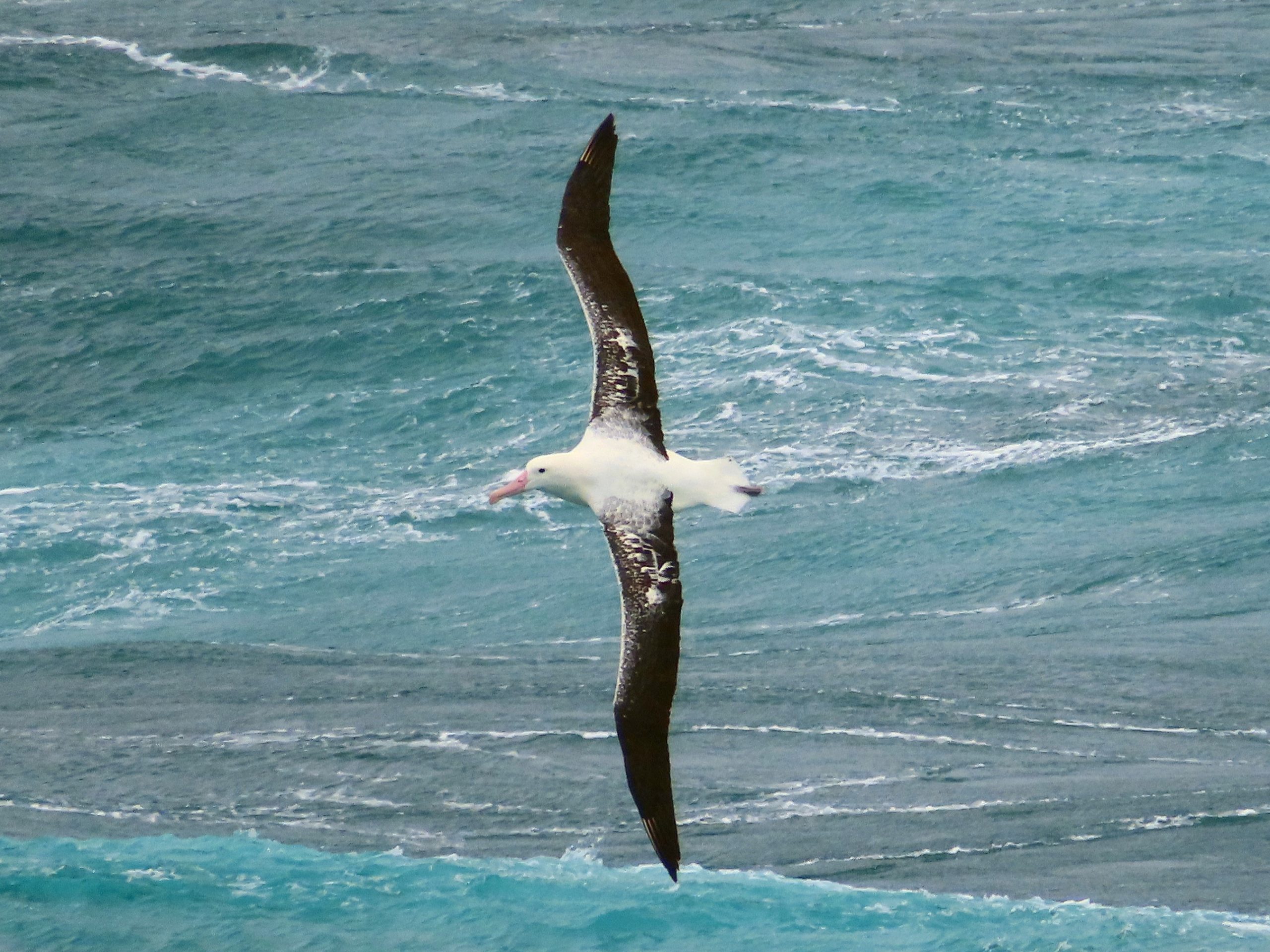
Royal albatross 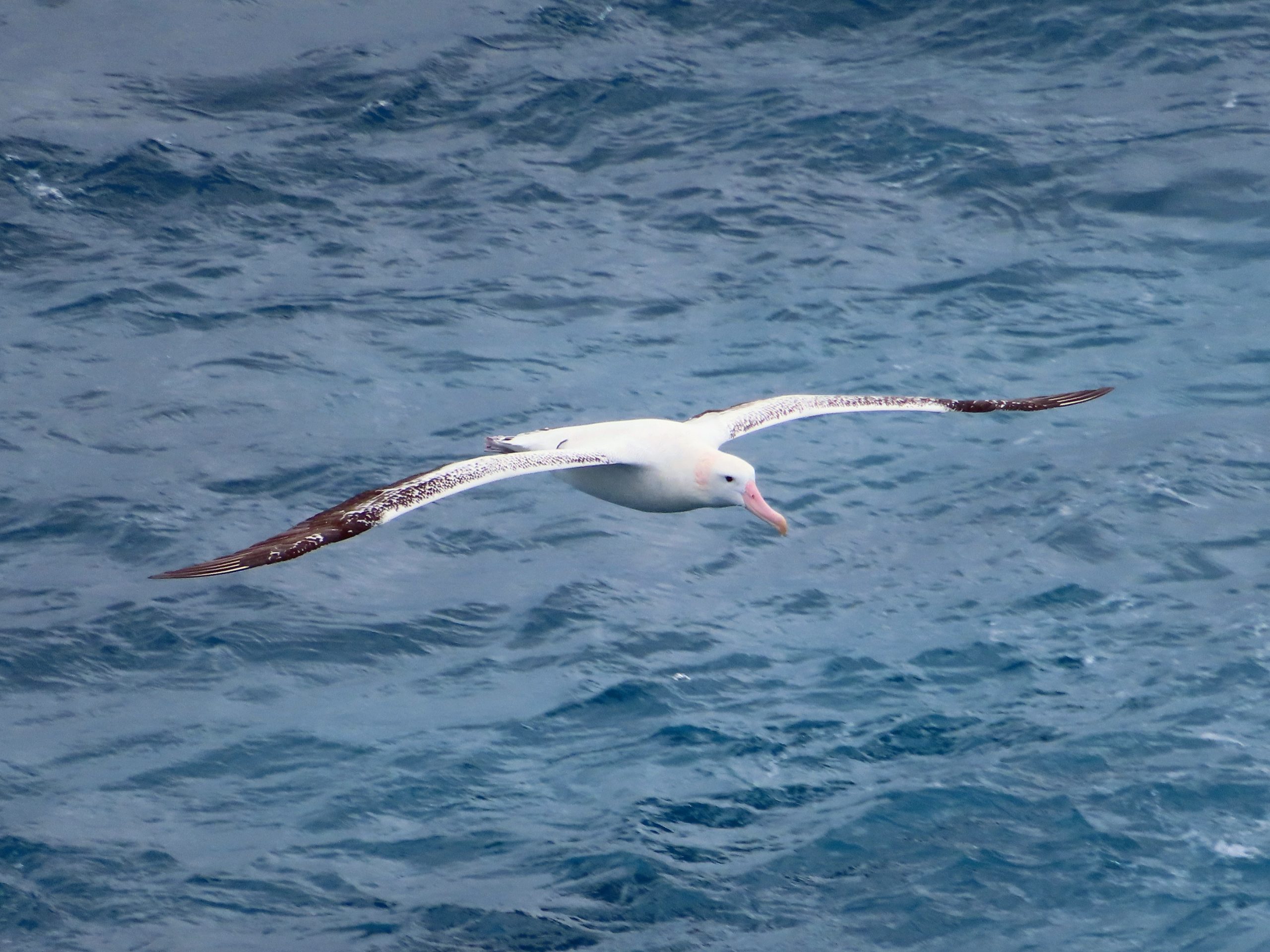
Wandering albatross

I had believed that Prion identification was near impossible. However, it wasn’t that hard in a given location. With semi-decent photos showing facial patterns, Antarctic and Slender-billed prions can be distinguished. It takes practice but once you identified your first prion with confidence, the rest would be history.

The sliders are penguins, the iconic birds of Antarctica. There are three common penguin species in Antarctica: Gentoo, Adélie and Chinstrap. Penguins nest on snow free ground. Snow starts melting from tops of hills in spring. That means, if penguins wish to have early nesting so that their chicks would have enough time to grow, they need to nest on the top and walk between their nests and ocean daily, along the so called “penguin highway”. I estimated the elevation/distance to the top and measured penguins’ footsteps, and I was devastated (by the amount to travel). Penguins, however, just walk. They are probably the toughest birds in the world. I enjoy my life with penguins but may not enjoy a penguin’s life.

Birds of the Falkland Islands

Falkland is birders’ heaven! There are over 200 species of seabirds, songbirds and shorebirds. Vagrants from South and North Americas constantly show up. Close encounter with Black-browed albatross and Southern rockhopper penguin colonies in West point island was no doubt the highlight for many of us. However, my best bird of the trip was Cobb’s wren. There are two endemic bird species to Falkland, Falkland steamer duck and Cobb’s wren. I knew I would see Falkland steamer duck (thanks to eBird which provide the most updated bird sightings around the world!) but not so sure about Cobb’s wren.
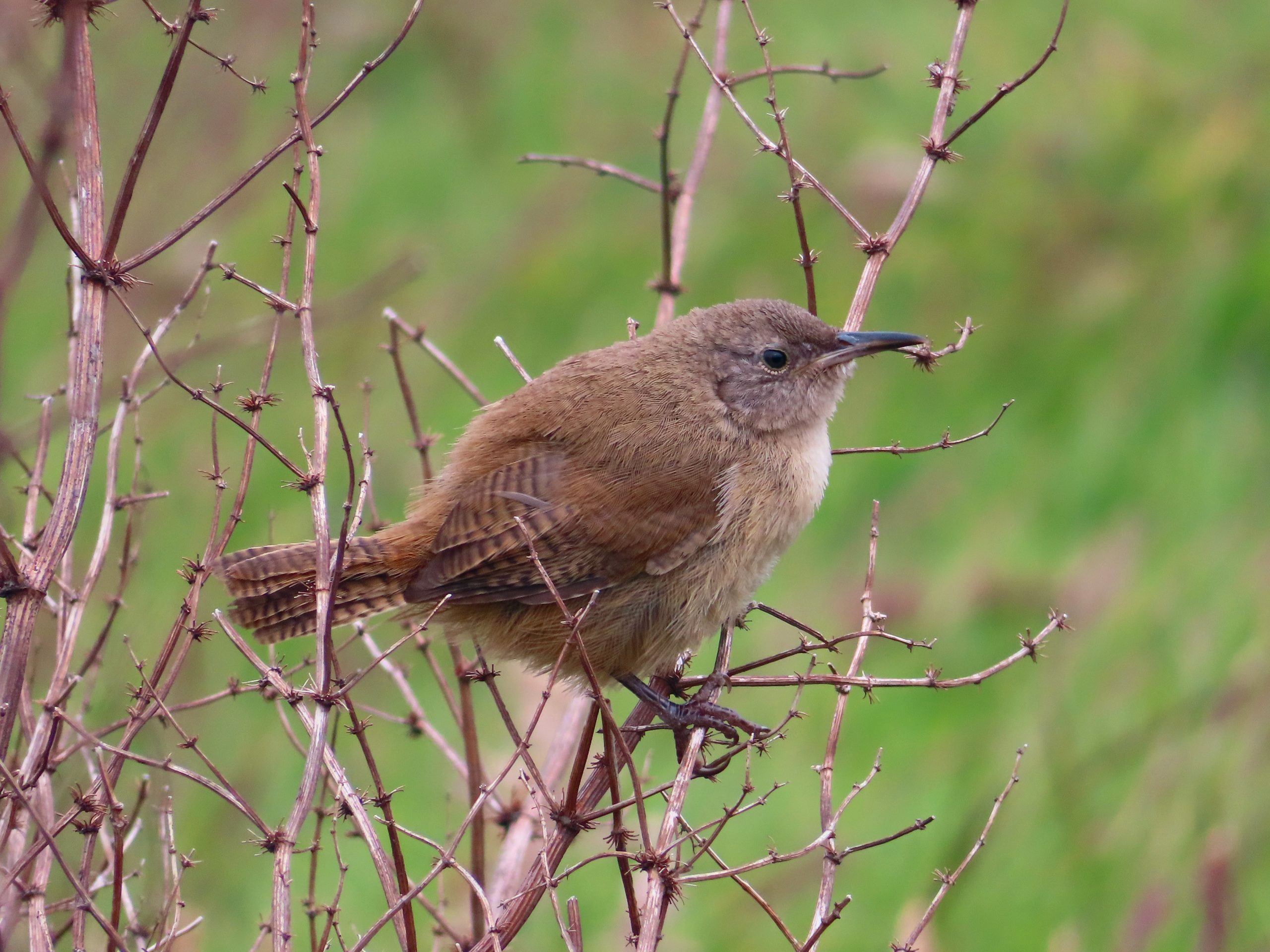
This tiny brown songbird looks similar and is related to our House wren but only resides in some islands of Falkland. I had been talking about it, showing its pictures and playing recordings during my lectures and small sessions, on deck and in dining room. Everyone knew I was looking for a long-lost friend whom I had never met. When I eventually saw not one, not two, not three but FOUR in Carcass island! I felt like I stopped breathing for 5 minutes but the oxygen content in my blood reached the highest! My teammates were joking that I could return to the ship right away, which I didn’t but found 7 more life birds, or lifers. I am a birdman. A birdman never stops looking for birds! By the end of the day, many came to me. They might or might not remember the name of Cobb’s wren, but all congratulated me on finding the “brown bird”. It was a heartwarming moment knowing people can be connected by birds.
Marine Mammals
Marine mammals are new to me, but I am learning from some best marine biologists. My passion for cetaceans has grown significantly ever since, so has my life list: Blue, Fin, Sei, Humpback, Minke whales, Orca… you name it. I’m even able to identify a dolphin or two, like Commerson’s.
I have special interest in Humpback whales (Megaptera novaeangliae), which normally stay above water longer than other whales. Interestingly, the undertail pattern is unique for each individual. If you snap a photo of the underside of the tail and send it along with GPS coordinates to the website Happywhale.com, you will get a report of the whale’s identity and be able to track it. All of your contributions there comprise important citizen science!

Humpback whale under-tail pattern 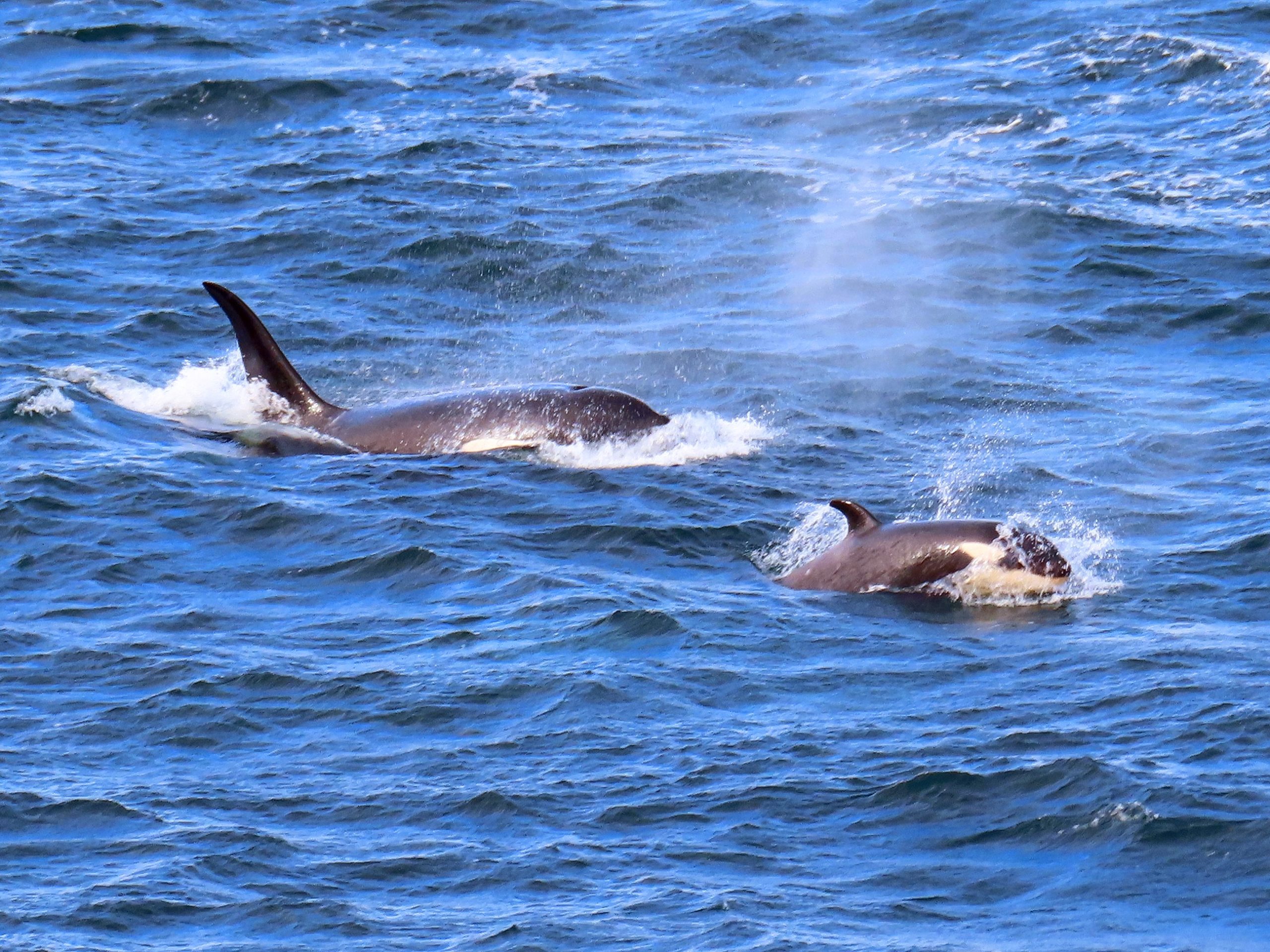
Baby Orca and adult
My favorite whale is Orca but they are actually members of the dolphin family and not the whale family; their name is misleading. Who doesn’t like Orca, eh? During this trip, I saw Orca five times, including three hunting events. Seeing baby Orca jumping out of water was another breath-taking moment.
A Climate Note
I compared my photos and photos taken in previous Antarctic seasons; there was noticeably less snow. Now, I’m back home and buried under the largest snow fall on the 8th day of a State of Emergency. Is this normal?

